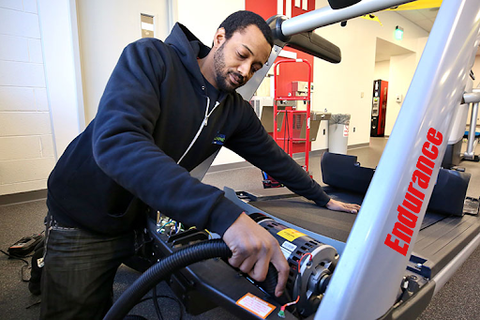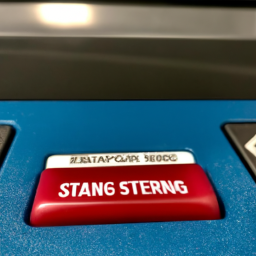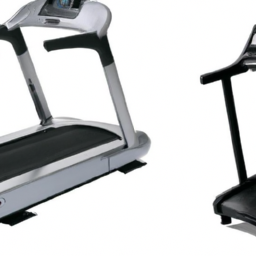In this article, you will discover the straightforward steps to effectively oiling your treadmill. Whether you’re a seasoned fitness enthusiast or just starting out on your health journey, maintaining your equipment is crucial for optimal performance and longevity. We at Fit Gear Gurus understand the importance of keeping your treadmill in top condition, and we’re here to guide you through the process. With our easy-to-follow instructions, you’ll learn the best practices to ensure smooth and seamless workouts on your treadmill. So, let’s dive right in and get your treadmill back in tip-top shape!
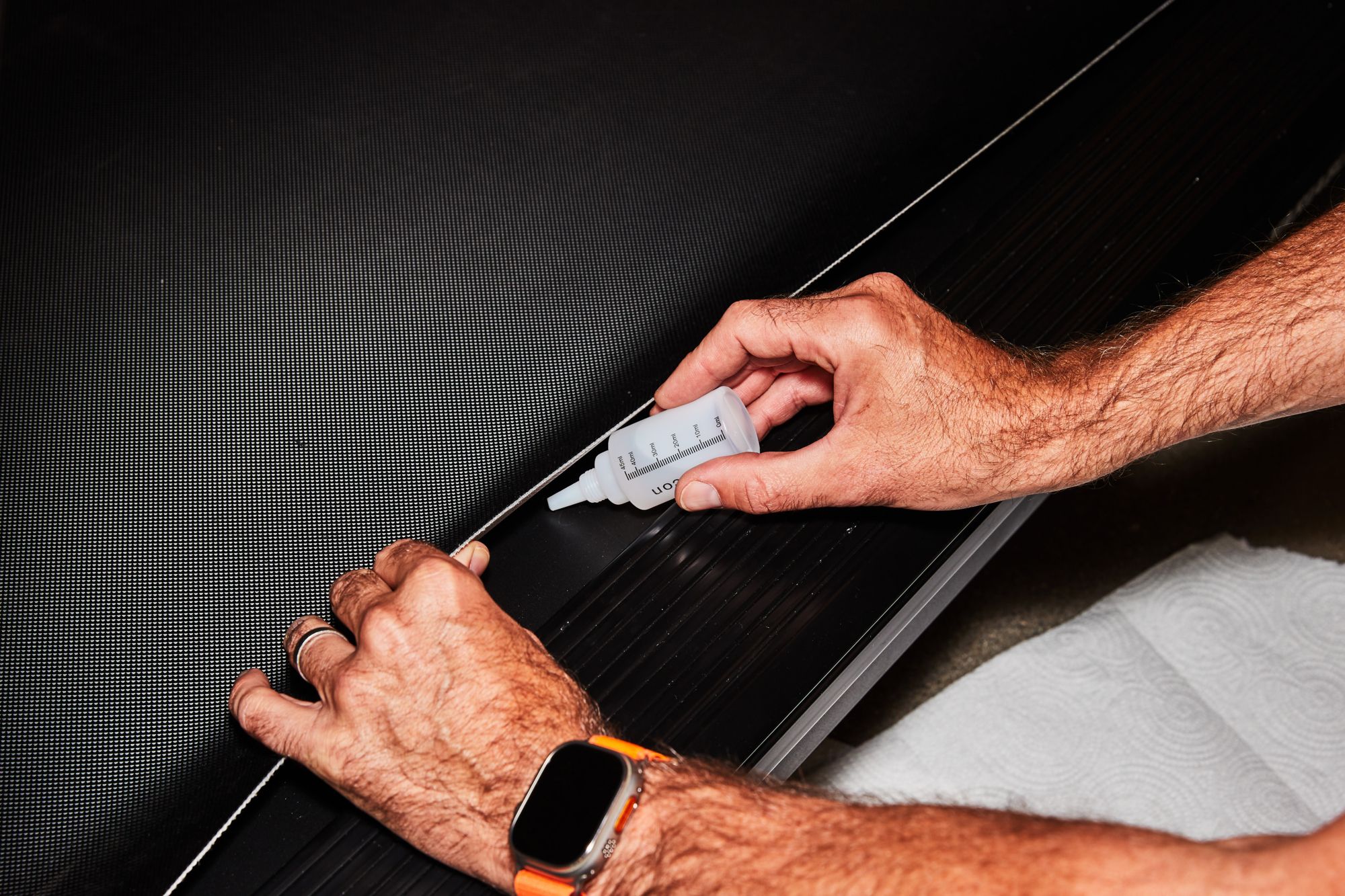
This image is property of hips.hearstapps.com.
Why You Should Oil Your Treadmill
The importance of regular treadmill maintenance
When it comes to maintaining your treadmill, oiling is an essential task that should never be overlooked. Regular oiling is crucial to keep your treadmill running smoothly and efficiently. It reduces friction between various moving parts, preventing wear and tear and extending the lifespan of your treadmill.
Benefits of oiling your treadmill
Oiling your treadmill offers several benefits that directly impact its performance and durability. Firstly, it reduces friction between the deck and the belt, ensuring smooth movement and preventing overheating. This not only enhances your workout experience but also protects the motor from excess strain.
Furthermore, regular oiling helps to prevent premature belt and deck wear, which can lead to costly repairs or replacements. By lubricating the treadmill, you also minimize noise and vibrations, making your workouts more enjoyable and quieter. Lastly, proper lubrication reduces the strain on your treadmill’s motor, reducing the risk of motor burnout and extending its lifespan.
When to Oil Your Treadmill
Signs that your treadmill needs lubrication
Knowing when to oil your treadmill is crucial for maintaining its longevity and optimal performance. There are a few telltale signs that indicate your treadmill needs lubrication. If you notice an increase in friction or resistance while running or walking on the treadmill, it is likely due to insufficient lubrication.
Another common sign is excessive noise or squeaking during operation. This noise is caused by the lack of sufficient lubrication between the belt and the deck. Additionally, if you notice visible wear or fraying on the belt or deck, it is a clear indication that it needs lubrication to reduce friction.
Frequency of oiling based on usage
The frequency of oiling your treadmill depends on how often you use it. As a general guideline, you should aim to oil your treadmill every three to six months. However, if you use your treadmill regularly or engage in intense workouts, you may need to increase the frequency to once every two months.
It’s important to note that excessive lubrication can be detrimental to your treadmill’s performance. Over-oiling can lead to belt slippage, accumulation of debris, and even damage to the motor. Therefore, it’s essential to find the right balance and avoid overdoing the lubrication process.

This image is property of i.ytimg.com.
Choosing the Right Treadmill Oil
Different types of treadmill lubricants
Not all lubricants are created equal, and choosing the right one for your treadmill is crucial. There are different types of lubricants available on the market, including silicone-based, wax-based, and petroleum-based options. Each type has its own advantages and considerations.
Silicone-based lubricants are the most commonly recommended for treadmill maintenance. They are durable, long-lasting, and provide excellent lubrication without attracting excessive dust and debris. Wax-based lubricants are also popular as they offer similar benefits to silicone-based lubricants.
Petroleum-based lubricants are not recommended for most modern treadmills, as they can attract dust and debris, causing potential damage to the treadmill’s components. It’s essential to check your treadmill’s user manual or consult the manufacturer to determine the best type of lubricant for your specific model.
Factors to consider while selecting the oil
When selecting the oil for your treadmill, there are a few factors to consider. Firstly, ensure that the lubricant is specifically designed for treadmills and not a generic lubricant. Treadmill lubricants are formulated with the necessary properties to reduce friction effectively.
Another crucial factor is the viscosity of the oil. It should have a low viscosity to properly penetrate the moving parts without causing excess buildup. Additionally, opt for a lubricant that is odorless and colorless to avoid any unwanted smells or stains on your treadmill.
Lastly, consider the size of the container or bottle. Depending on your frequency of use, you may need a larger container to ensure you always have an adequate supply of lubricant on hand.
Preparing Your Treadmill for Oiling
Powering off the treadmill
Before you start the oiling process, it’s essential to power off your treadmill and unplug it from the electrical outlet. Safety should always be a priority when working with any electrical equipment. This step ensures that no accidents or electrical malfunctions occur during the maintenance process.
Cleaning the walking belt
Once the treadmill is powered off, take a moment to clean the walking belt thoroughly. Use a gentle cleaner or a damp cloth to wipe away any dirt, sweat, or debris that has accumulated on the surface. This step ensures that the oil can penetrate the belt and deck without any obstructions.
Inspecting other components
While preparing your treadmill for oiling, take the opportunity to inspect other components for any signs of damage or wear and tear. Check the belt for any fraying, inspect the deck for cracks or unevenness, and examine the frame for any loose bolts or screws. Addressing any potential issues before oiling can prevent further damage and ensure optimal performance.

This image is property of i.ytimg.com.
Steps to Oil Your Treadmill
Locating the lubrication points
Every treadmill has specific lubrication points that require attention during the oiling process. Consult your treadmill’s user manual or refer to the manufacturer’s guidelines to locate these points accurately. The most common lubrication points are located underneath the walking belt, near the motor, and at the front and rear rollers.
Applying the oil correctly
Once you have located the lubrication points, apply the lubricant as directed by your treadmill’s manufacturer. Typically, you will need to lift the belt slightly and apply a small amount of lubricant to the deck below. Use an applicator or a cloth to spread the oil evenly along the length of the deck.
When applying the oil, it’s important to be mindful of the quantity. Over-lubricating can lead to belt slippage and accumulation of debris. Follow the manufacturer’s instructions regarding the appropriate amount of oil to use for your specific treadmill model.
Wiping off excess oil
After applying the oil, take a clean cloth or towel and gently wipe off any excess lubricant from the walking belt and the deck. It’s important to remove any excess oil to prevent it from attracting dust, dirt, or debris. This step ensures a clean and efficient working surface for your treadmill.
Realigning the belt
Once the oiling process is complete, check the alignment of the walking belt. If it has shifted during the oiling process, use the adjustment screws at the rear of the treadmill to realign the belt. It should be centered and aligned evenly on both sides. Proper belt alignment ensures smooth operation and reduces the risk of any further damage.
Recommended Treadmill Lubrication Techniques
Single application method
The single application method involves applying the lubricant once to the treadmill deck. This method is suitable for most treadmills, especially those with moderate usage. Follow the manufacturer’s guidelines regarding the frequency of lubrication to determine when you should reapply the oil.
Multi-application method
The multi-application method involves applying the lubricant multiple times within a specific time frame. This method is recommended for treadmills with heavy usage or intense workouts. It provides additional lubrication and reduces the risk of excessive wear and tear. Follow the manufacturer’s guidelines to determine the appropriate intervals for reapplying the lubricant.
Spray vs. liquid lubricants
Both spray and liquid lubricants are available for treadmill maintenance. Spray lubricants offer ease of application and can reach tight or hard-to-reach areas. Liquid lubricants, on the other hand, provide more control and precision during application. Choose the one that suits your preferences and the specific needs of your treadmill.

This image is property of i.ytimg.com.
Common Mistakes to Avoid While Oiling Your Treadmill
Over-lubrication
One of the most common mistakes is over-lubricating the treadmill. Applying too much oil can lead to belt slippage, accumulation of debris, and even damage to the motor. It’s crucial to follow the manufacturer’s guidelines regarding the appropriate amount of lubricant to use for your specific treadmill model.
Using incorrect lubricant
Using the wrong type of lubricant can also cause problems for your treadmill. Petroleum-based lubricants, for example, can attract dust and debris, leading to potential damage to the treadmill’s components. Always refer to your treadmill’s user manual or consult the manufacturer to ensure you use the recommended lubricant.
Neglecting maintenance schedule
Neglecting the maintenance schedule of your treadmill can have long-term consequences on its performance and longevity. Regular oiling is just one aspect of treadmill maintenance. It’s essential to also clean the treadmill regularly, check and tighten bolts, and inspect and replace worn-out parts. Following a proper maintenance schedule ensures that your treadmill operates at its best.
Other Maintenance Tips for Your Treadmill
Cleaning the treadmill regularly
In addition to oiling, cleaning your treadmill regularly is crucial for its maintenance. Use a damp cloth or a gentle cleaner to wipe away any dirt, sweat, or debris that has accumulated on the surface of the treadmill. Pay particular attention to the console, handrails, and other areas where sweat or dust may accumulate.
Checking and tightening bolts
Regularly check and tighten bolts on your treadmill to ensure stability and prevent any safety hazards. Use a wrench or a suitable tool to tighten any loose bolts or screws. Loose bolts can cause excessive vibrations or noise during workouts and may compromise the overall stability of the treadmill.
Inspecting and replacing worn-out parts
Over time, certain parts of your treadmill may wear out and require replacement. Inspect the walking belt, deck, and other components regularly to identify any signs of wear or damage. Replace worn-out parts promptly to prevent further damage and maintain the optimal performance of your treadmill.
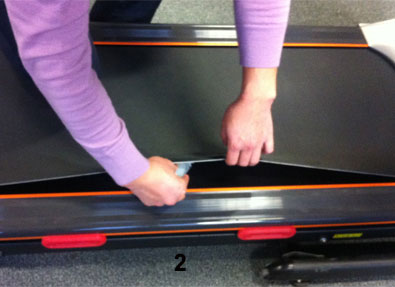
This image is property of www.jllfitness.co.uk.
Troubleshooting Treadmill Issues
Uneven belt alignment
If you notice that your treadmill belt is not aligned properly or is running off-center, it can impact your workout experience. To fix this issue, check the rear adjustment bolts located at the back of the treadmill. Use a wrench to loosen or tighten the bolts until the belt is centered and aligned evenly on both sides.
Excessive noise or squeaking
Excessive noise or squeaking during treadmill operation can be quite bothersome. This noise is often caused by insufficient lubrication between the belt and the deck. Start by applying lubricant to the specific lubrication points as recommended by the manufacturer. If the noise persists, consult a professional technician for further inspection.
Burning smell during operation
If you detect a burning smell coming from your treadmill during operation, it’s a clear indication of a potential issue. A burning smell typically arises due to excessive friction or a malfunctioning motor. In this case, it’s important to power off your treadmill immediately and seek professional assistance to avoid any further damage or safety hazards.
When to Seek Professional Help
Complex treadmill issues
While regular maintenance and troubleshooting can solve many treadmill issues, some problems may require professional intervention. Complex issues such as motor failures, electronic malfunctions, or major structural damage should be addressed by a qualified technician. Attempting to fix these issues without the necessary expertise can lead to further damage or injury.
Lack of technical knowledge and skills
If you lack the technical knowledge and skills necessary for treadmill maintenance or repair, it’s always best to seek professional help. Treadmills are complex machines with various components, and improper handling can do more harm than good. Hiring a professional technician ensures that your treadmill receives the proper care and attention it deserves.
In conclusion, oiling your treadmill is an integral part of its maintenance routine. Regular lubrication reduces friction, enhances performance, extends the treadmill’s lifespan, and prevents costly repairs. By following the recommended steps and techniques, while avoiding common mistakes, you can keep your treadmill in optimal condition and enjoy a smooth and efficient workout experience for years to come.
Remember to consult your treadmill’s user manual or contact the manufacturer for specific guidelines and recommendations regarding oiling and maintenance. With proper care and attention, your treadmill will continue to be a reliable fitness companion on your journey to a healthier and fitter lifestyle.

